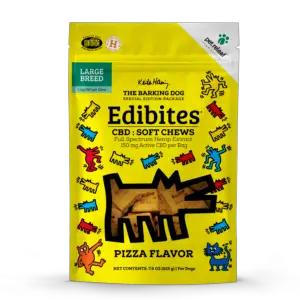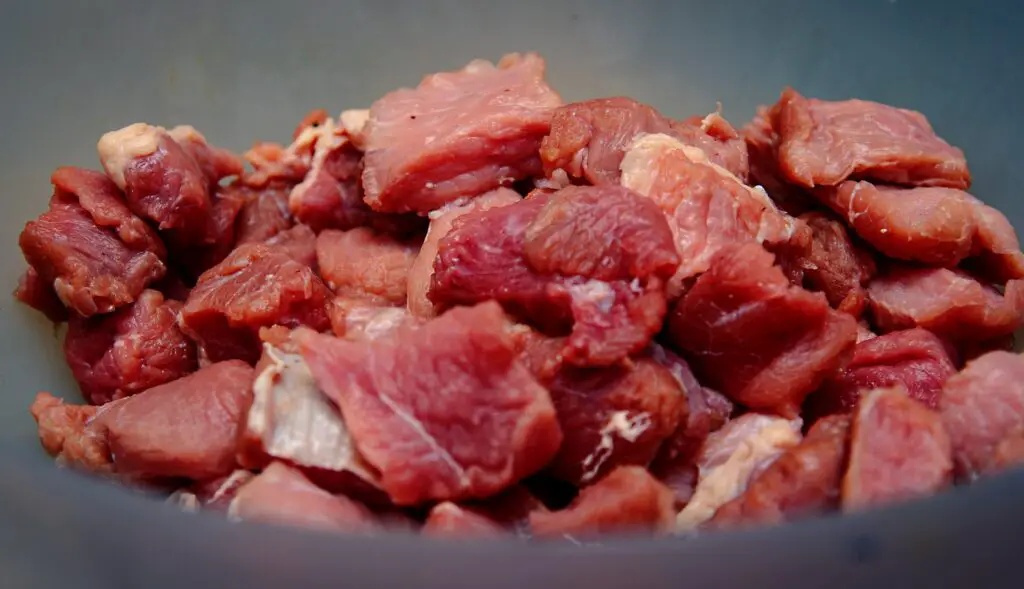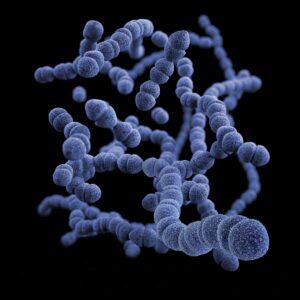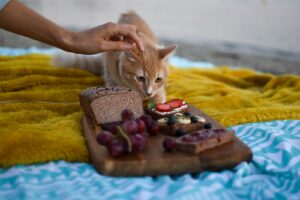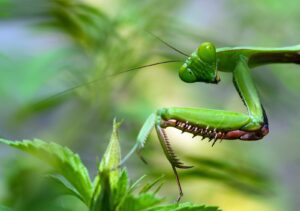
Key points
- Raw cat food is made with unprocessed products such as animal meat, organs, and bones. Raw food diet is also known as the BARF diet, which stands for “biologically appropriate raw food” or “bones and raw food.”
- Raw cat food is similar to the natural diets of felines living in the wild and offers many health benefits. For instance, it can lower the cat’s risk of kidney or urinary diseases, improve dental health, help maintain water balance, and contribute to the general health state.
- By feeding a raw diet to your cat, you run an increased risk of pathogen poisoning and cross-contamination. That is why you should be cautious when preparing raw food. Plus, a raw diet is not recommended for cats with immune diseases, and it should be avoided in households with children or elderly people.
- If you want to switch your feline to a raw food diet, you can go with home-cooked meals or use commercially available raw diets. Remember, homemade raw diets should be formulated by your veterinarian to ensure that they contain appropriate calories and nutrients.
Today, cat owners have so many options when it comes to their pets’ diets that it can be tough and confusing to choose the best one. Some pet parents stick to traditional home-cooked meals because they want to know what exactly is in their cats’ food. Homemade diets for cats can be cooked or raw, and many pet owners opt for raw diets because they resemble the cat’s diet in the wild. But is a raw diet actually good for cats?
Table of Contents
Raw Cat Diet – What Is It?
A raw cat diet generally consists of uncooked and unprocessed animal products, including organ meat, muscle meat, and bones. That’s why raw food is also known as the BARF diet, which means “biologically appropriate raw food” or “bones and raw food.”
It’s essential to ensure that your cat’s diet is complete and balanced so that the pet can receive all essential nutrients. If you decide not to go with commercial raw food and instead choose to prepare your feline’s meals at home, you should consult a veterinary nutritionist to help you find the perfect formula that will match all your cat’s needs. A well-balanced diet is crucial for your cat’s well-being, and poorly formulated food can lead to the cat developing many health issues.
Benefits Of Raw Food For Cats
Cats are obligate carnivores which means that their diets should contain primarily meats and animal products. While felines can benefit from some carbohydrates and vegetables in their food, they don’t need to consume them to survive. Ultimately, high-protein and high-moisture diets are best suited for felines.
Meat contains some essential nutrients such as taurine, fatty acids, arachidonic acid, and vitamins A, D, and B, which can’t be found in adequate amounts in other products.
Raw diet supporters state that the cooking process decreases the nutritional value of food. So instead, they try to make their cats’ diets as similar to what felines eat in the wild as possible.
Raw food diets also contain more water than commercial kibble. Since cats get most of their water intake directly from the food they consume, your feline’s diet must have a high moisture content.
Additionally, a raw diet can help with urinary problems and is better for kidney health. Because heat processing lowers the amount of proteins and amino acids in the food, the pet’s kidneys don’t work as much as they should to eliminate all food waste. On the other hand, a raw diet helps maintain kidney health and contributes to the pet’s general well-being.
But even given all the potential advantages of raw cat food, it is still a controversial topic. While the supporters of these diets claim that raw food offers many health benefits, such as shinier coats, cleaner and healthier teeth, lower obesity risk, and improved general health, other pet owners doubt whether raw food is even safe for cats.
Is Raw Cat Food Safe?
As with any type of diet, there are some risks that come with feeding your cat raw food.
Pathogens
The main reason why humans cook their pets’ meals is that raw food may contain pathogens such as Salmonella and E. coli. These pathogens can cause some life-threatening infections and food poisoning.
Feline digestive tracts are shorter, and their environment is more acidic, which is why they generally digest raw foods better than humans. In most cases, cats have no problems tolerating raw food, except when they have certain health conditions such as immune-mediated disease.
Cross-Contamination
Even though your cat is extremely unlikely to catch Salmonella or E.Coli from raw food, it doesn’t mean that you and other family members won’t be exposed to the pathogens. These microbes can be left on food dishes, surfaces where food is prepared, or even your cat’s face and toys. That’s why if you or any other people that share a household with you suffer from immune diseases, you should avoid giving your cat raw food. The same is true if there are children or older people in your household.
How To Avoid The Risks Of A Raw Diet For Cats?
Of course, you can’t eliminate all the risks, but you can significantly lower them if you follow these tips:
- Try to prepare your feline’s meals in one area in your house and thoroughly clean all surfaces afterward.
- Store excess food in the freezer.
- Wear gloves when preparing raw animal products.
- Make sure that the raw meat you use is high in quality and comes from a reliable source.
- Put your cat’s bowl in an area with no carpets and upholstery so that it’ll be easier for you to clean it properly.
- Don’t forget to sanitize bowls after feeding your cat.
Bones are usually included in raw diets for cats as a source of phosphorus and calcium. But don’t forget to grind bones if you plan on feeding them to your cat, as small bones or their pieces can cause gastrointestinal or airway obstructions or oral injuries.
Make Your Raw Diet Complete And Balanced
A popular misconception about a raw diet for pets is that it is naturally well-balanced. While preparing homemade raw meals for your cat gives you total control over what your cat eats, you shouldn’t just feed your cat a variety of meats without paying any attention to meals’ calorie and nutrient content. Cat’s can’t receive all necessary nutrients simply by eating a large amount of raw meat. And feeding your feline an unbalanced diet can lead to a number of health issues.
Don’t be fooled by the fact that wild cats eat raw food with no additional calculations. Unfortunately, wild cats have a much shorter life expectancy than domestic animals, and improper nutrition is one of the reasons for this. This is why it’s essential to feed your cat a diet formulated by your veterinarian or a veterinary nutritionist. Additionally, it’s nearly impossible to find properly balanced home-cooked raw recipes for your cat on the internet or in print.
How To Start Feeding A Cat Raw Food?
The best option is to gradually introduce raw products into your feline’s diet rather than rush and change the diet rapidly. You can start slowly phasing in raw food and gradually switch to a completely raw diet over time.
How To Prepare Raw Cat Food?
As soon as your vet develops a healthy and balanced diet that will suit your cat and provides you with recipes, it’s essential to learn how to prepare and serve raw food.
The raw cat diet usually includes the following ingredients:
- Raw muscle meat
- Organ meat from poultry
- Fish
- Eggs
- Ground raw bones
- Dietary supplements
And here are some things that you may need to prepare raw food for your cat:
- Cutting board that can go in the dishwasher
- Poultry shears
- Glass or stainless steel mixing bowls
- Meat grinder
- Disposable gloves
- Storage containers
- Some empty space in your freezer and refrigerator
Preparing a raw diet at home is time-consuming, which is why many pet owners prefer to prepare enough food for a few weeks at once and then simply store it in their freezers.
In addition to raw food, your pet’s vet may also prescribe nutritional supplements that will promote your cat’s general well-being.
Commercial Raw Diets For Cats
Commercial raw feline diets are considered to be less beneficial than homemade meals. But if you don’t have the time to prepare raw food at home, you can ask your veterinarian to recommend a raw diet that’s available commercially. Even though these diets are inferior to home-cooked meals, they are still better than most regular kibble.
Commercial raw diets are stored in a frozen or freeze-dried state to lower the risk of pathogen contamination, but you still need to take precautions when preparing them.
Alternatives To A Raw Diet For Cats
If, for some reason, your cat can’t have raw food, or you just want to eliminate all the risks but still want to provide your feline with a proper diet, consider switching it to home-cooked meals. You can also try high-protein wet cat food or insect-based kibble.
Dry kibble usually contains a lot of carbohydrates which tend to have a negative impact on the feline’s life expectancy. However, PetCan’s natural insect-based diet is high in protein and essential nutrients, hypoallergenic, sustainable, and good for the planet. Our food is also incredibly tasty!
FAQ
Is a raw diet good for cats?
Yes, a raw diet resembles the natural diets felines consume in the wild. If formulated by a professional, it can offer a lot of health benefits to your cat.
Which raw food is best for cats?
The best sources of essential nutrients for cats are raw chicken (wings, necks, or drumsticks) and raw lamb shanks. Remember to buy only high-quality products from reliable sources.
Why are vets against a raw diet for cats?
Raw diets are associated with the risk of pathogen contamination, which can lead to food-borne infectious diseases in cats and humans.
Can I feed my cat raw meat from the grocery store?
Yes, cats can eat chicken and other meats available in grocery stores. However, remember to store and prepare them properly.
Is freeze-dried raw food safe for cats?
Yes, frozen or freeze-dried raw food for cats is safe and rich in nutrients.
How much raw food should I feed my cat?
Your vet should determine the perfect portion and formula of raw food for your cat. However, the general recommendation is to feed your cat about 2-3% of its weight daily, splitting that amount into two whole and balanced meals.

